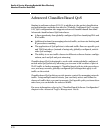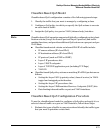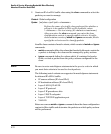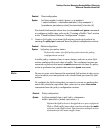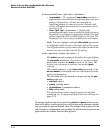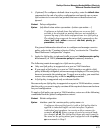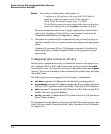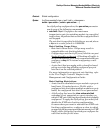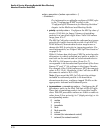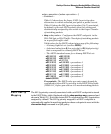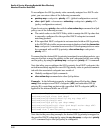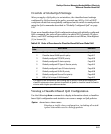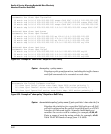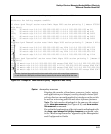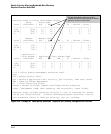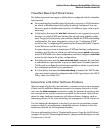
Quality of Service: Managing Bandwidth More Effectively
Advanced Classifier-Based QoS
action <qos-action > [action <qos-action > ...]
—Continued—
For information on globally-configured ICMP, refer
to the “Configuring ICMP” section in the
“Configuring IP Parameters for Routing Switches”
chapter in the Multicast and Routing Guide.
• priority < priority-value >: Configures the 802.1p class of
service (CoS) bits in Layer 2 frames of matching
packets in a specified traffic class. Valid CoS values
range from 0 to 7.
The 802.1p CoS value controls the outbound port-queue
priority for traffic leaving the switch. In an 802.1Q
VLAN network, downstream devices may honor or
change the 802.1p priority in incoming packets. For
more information, see “Layer 2 802.1p Prioritization”
on page 6-14.
Table 6-3 shows how the Layer 2 802.1p priority value
determines to which outbound port queue a packet is
sent both on the switch and on a downstream device.
The 802.1p CoS numeric value (from 0 to 7)
corresponds to the hexadecimal equivalent of the three
binary “0” and “1” bit settings in the Layer 2 header.
For example if the CoS bit values are 111, the numeric
value is 7 (1+2+4). Similarly, if the CoS bits are 011,
the numeric value is 3 (1+2+0).
Note: If you want the 802.1p CoS priority settings
included in outbound packets to be honored on
downstream devices, configure tagged VLANs on the
appropriate inbound and outbound ports.
• ip-precedence < precedence-value >: Configures the IP
precedence value in the IPv4 ToS byte or IPv6 Traffic
Class byte of matching packets in a specified traffic
class. Valid IP precedence values are either a numeric
value from 0 (low priority) to 7 (high priority) or its
corresponding name:
0 routine
1 priority
2 immediate
3 flash
4 flash-override
5 critical
6 internet (for internetwork control)
7 network (for network control)
6-78



